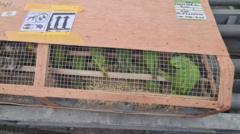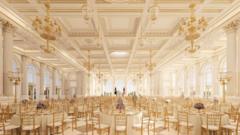The Palm House, a prominent attraction for plant enthusiasts, has been experiencing substantial deterioration, with noticeable rust on the iron framework and issues related to condensation. Reuben Briggs, who oversees capital projects at Kew, cited the extreme tropical conditions created within the glasshouse as a contributing factor to these problems. “It’s dripping with condensation, and that cast and wrought iron is starting to corrode,” he explained.
The renovation project is designed not just for restoration but aims to implement improvements that will prepare both glasshouses to handle future climate challenges while enhancing the experience for visitors and plant health. Mr. Briggs emphasized the dual goals of conservation and improvement, stating that it is vital to ensure that these historical structures can support the botanical collections they house effectively.
The upcoming major renovations will help Kew Gardens maintain its reputation as a leading center for plant research and conservation while ensuring that future generations can appreciate these architectural marvels.
Further details of the renovation plans and their implications for Kew’s climate goals are expected to be revealed closer to the commencement date. The temporary closure for the renovation period will not only apply to the Palm House but also to the Waterlily House, which has been an essential feature of Kew Gardens since the 19th century.
The renovation project is designed not just for restoration but aims to implement improvements that will prepare both glasshouses to handle future climate challenges while enhancing the experience for visitors and plant health. Mr. Briggs emphasized the dual goals of conservation and improvement, stating that it is vital to ensure that these historical structures can support the botanical collections they house effectively.
The upcoming major renovations will help Kew Gardens maintain its reputation as a leading center for plant research and conservation while ensuring that future generations can appreciate these architectural marvels.
Further details of the renovation plans and their implications for Kew’s climate goals are expected to be revealed closer to the commencement date. The temporary closure for the renovation period will not only apply to the Palm House but also to the Waterlily House, which has been an essential feature of Kew Gardens since the 19th century.



















